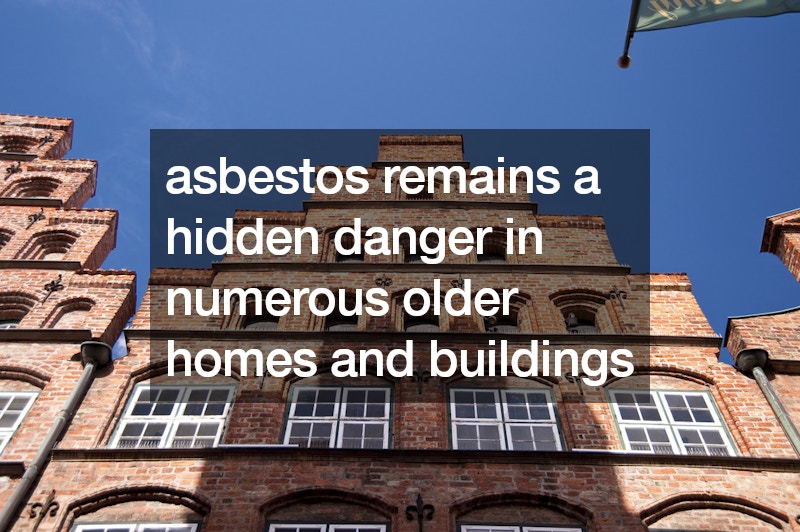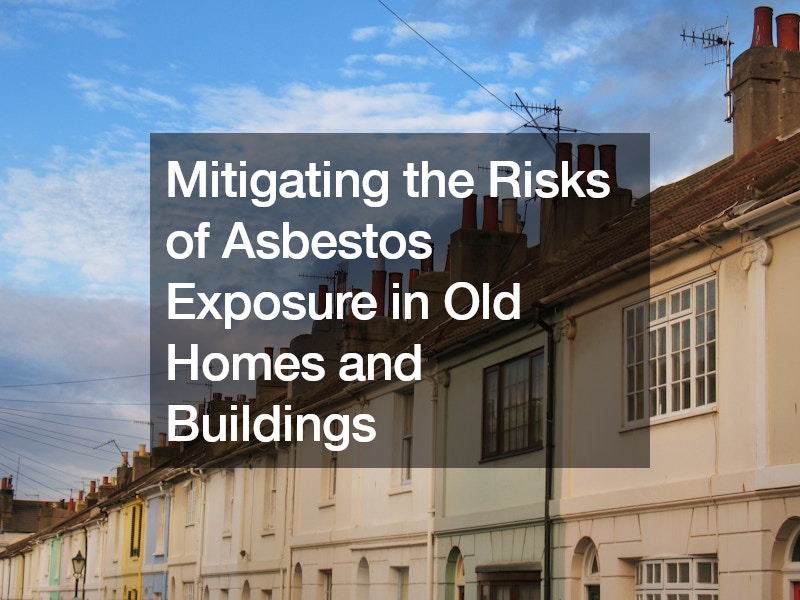Disclaimer: This website provides health information for educational purposes only and is not a substitute for professional medical advice, diagnosis, or treatment. Always seek the guidance of a qualified healthcare provider with any questions you may have.
Asbestos, once hailed for its heat resistance, durability, and fireproofing properties, is now notorious for its severe health risks. Despite being banned or heavily regulated in many countries, asbestos remains a hidden danger in numerous older homes and buildings. Mitigating the risks of asbestos exposure is essential to safeguard the health of occupants and ensure compliance with safety regulations. This article delves into the strategies and best practices for managing asbestos in older structures, emphasizing the importance of asbestos removal and professional intervention.
Understanding Asbestos and Its Dangers
Asbestos is a group of naturally occurring fibrous minerals: chrysotile, amosite, crocidolite, tremolite, anthophyllite, and actinolite.
These microscopic fibers can become airborne when disturbed. Inhalation of asbestos fibers can cause serious health conditions, including cancers affecting the larynx, ovaries, and gastrointestinal tract. Given the grave health risks, it is crucial to identify and manage asbestos in older buildings effectively.
Identifying Asbestos in Older Buildings
Older buildings, especially those constructed before the 1980s, are likely to contain asbestos in various materials such as insulation, floor tiles, roofing shingles, siding, and pipe coverings. Identifying asbestos in these structures requires a thorough inspection conducted by certified professionals. These experts can accurately determine the presence and condition of asbestos-containing materials (ACMs) without risking fiber release.
The Importance of Asbestos Surveys
An asbestos survey is the first step in managing asbestos risks. This comprehensive inspection involves visual assessment and sampling of suspected ACMs. Certified asbestos surveyors use specialized equipment and techniques to safely collect samples, which are then analyzed in accredited laboratories. The survey results provide a detailed report on the location, type, and condition of asbestos in the building, along with recommendations for management or removal.
Asbestos Removal: When and How?
Asbestos removal, also known as abatement, is a critical process when dealing with damaged or deteriorating ACMs. Removal is often necessary during renovations, demolitions, or when ACMs are in poor condition and pose a high risk of fiber release. The removal process should always be conducted by licensed asbestos removal professionals who adhere to strict safety protocols to prevent contamination and exposure.
Steps in the Asbestos Removal Process
Initial Assessment: A detailed evaluation of the site to determine the extent of asbestos contamination and develop a removal plan.
Containment: Sealing off the affected area to prevent the spread of asbestos fibers. This may involve erecting barriers, using negative air pressure units, and employing specialized equipment.
Removal: Carefully removing the ACMs using methods that minimize fiber release, such as wet removal techniques and using HEPA-filtered vacuums.
Disposal: Transporting and disposing of asbestos waste at authorized facilities in compliance with local regulations.
Post-Removal Inspection: Conducting air monitoring and clearance testing to ensure the area is free of asbestos fibers before reoccupancy.
Asbestos Encapsulation and Enclosure
In some cases, asbestos removal may not be feasible or necessary. Alternatives such as encapsulation and enclosure can be effective in managing asbestos risks. Encapsulation involves applying a sealant to the ACMs to prevent fiber release, while enclosure entails building airtight structures around the asbestos materials. Both methods require regular monitoring and maintenance to ensure their effectiveness over time.
Legal and Regulatory Requirements
Managing asbestos in older buildings involves strict adherence to legal and regulatory requirements. In many countries, regulations mandate asbestos surveys, proper handling and disposal of ACMs, and notification to relevant authorities before renovations or demolitions. Failure to comply with these regulations can result in significant fines and legal liabilities. It is crucial for property owners and managers to stay informed about local asbestos regulations and engage certified professionals to ensure compliance.
The Role of Professional Asbestos Management Services
Professional asbestos management services play a vital role in mitigating asbestos risks. These services encompass a range of activities, including asbestos surveys, risk assessments, abatement planning, and post-removal inspections. Certified asbestos professionals have the expertise, equipment, and training necessary to handle asbestos safely and effectively, ensuring that all actions comply with regulatory standards and minimize health risks.
Best Practices for Homeowners and Property Managers
Homeowners and property managers can take several proactive steps to mitigate asbestos risks in older buildings:
Regular Inspections: Schedule periodic inspections by certified asbestos professionals to monitor the condition of ACMs and detect any deterioration or damage.
Avoid Disturbance: Minimize activities that may disturb ACMs, such as drilling, sanding, or cutting. Inform contractors about the presence of asbestos before any work begins.
Prompt Repairs: Address any damage to ACMs promptly using professional services to prevent fiber release.
Educate Occupants: Inform building occupants about the presence of asbestos and the importance of avoiding disturbance. Provide clear guidelines on reporting suspected asbestos issues.
Emergency Plans: Develop and implement emergency response plans for accidental disturbance of asbestos, including evacuation procedures and contact information for asbestos professionals.
Conclusion
Asbestos remains a significant health hazard in older homes and buildings, necessitating diligent management and mitigation strategies. Understanding the risks associated with asbestos exposure and the importance of professional asbestos removal and management services is essential for ensuring safe living and working environments. By engaging certified asbestos survey companies and adhering to best practices and regulatory requirements, property owners and managers can effectively mitigate asbestos risks, protect occupants’ health, and maintain compliance with safety standards. Investing in professional asbestos management is not only a legal obligation but also a critical step in safeguarding public health and ensuring peace of mind.
.





